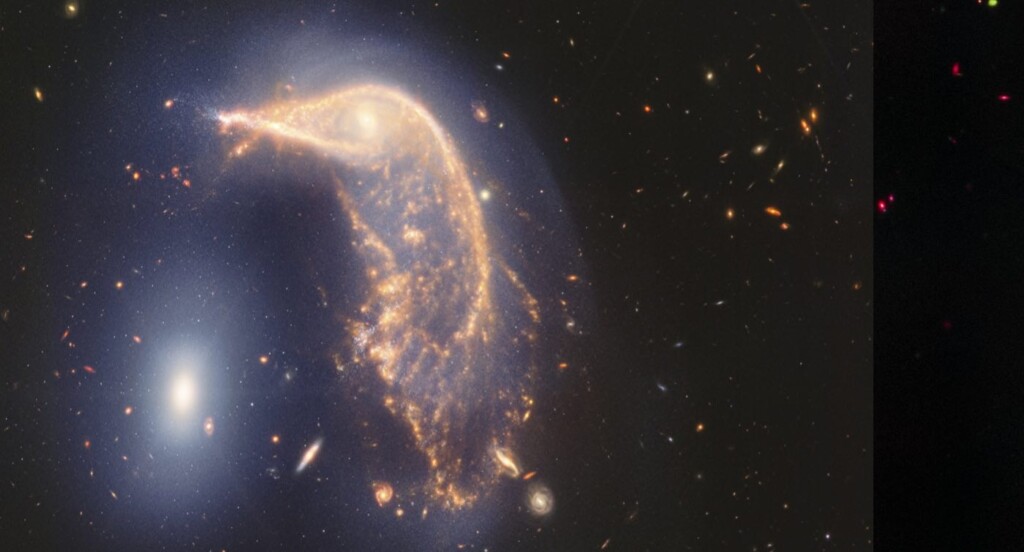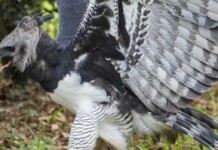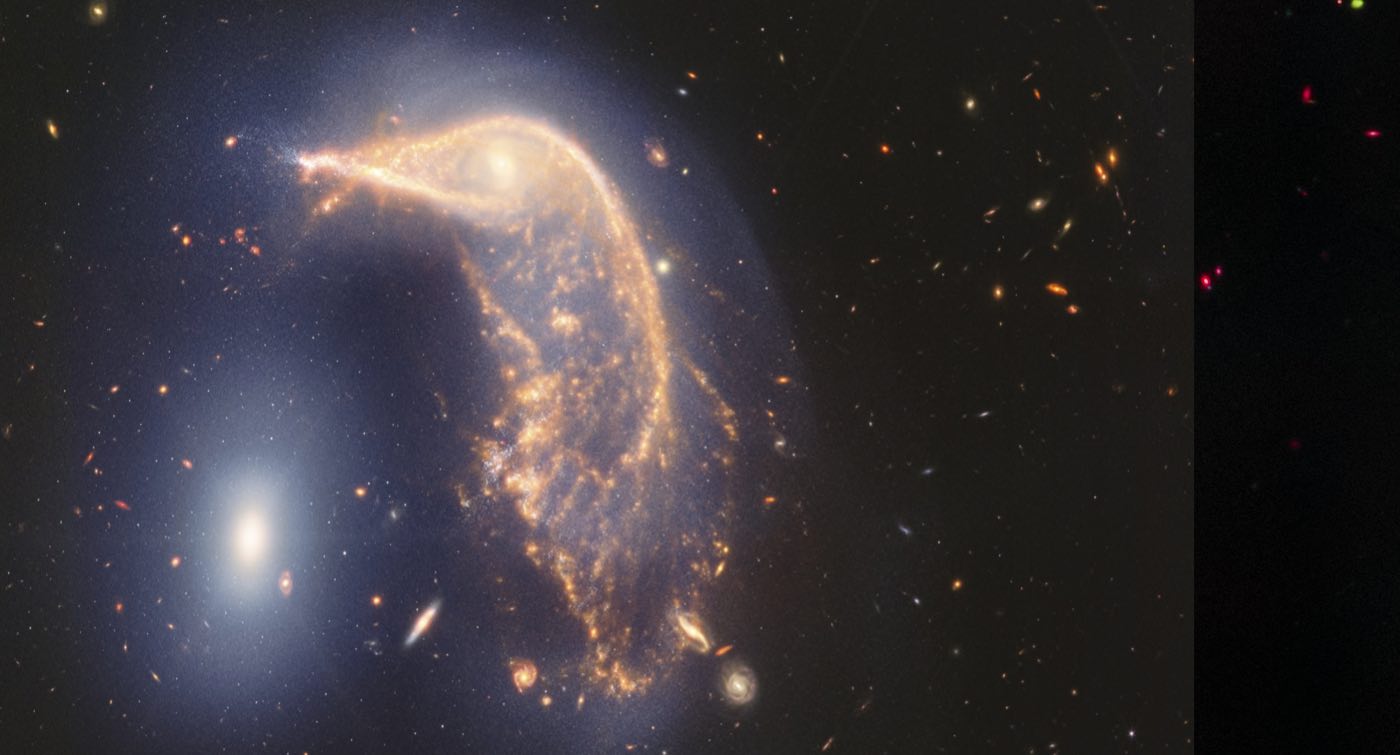
A cosmic penguin sparkling in space alongside an egg is marking the second anniversary of the James Webb Space Telescope.
The duo of interacting galaxies commemorates the NASA spacecraft that specializes in capturing infrared light—which is beyond what our own eyes can detect.
The image from Webb shows these galaxies, collectively known as Arp 142, locked in a “slow cosmic dance”.
The European Space Agency describes it this way: “Before their first approach, the Penguin held the shape of a spiral. Today, its galactic centre gleams like an eye, its unwound arms now shaping its beak, head, backbone, and fanned-out tail.”
Like all spiral galaxies, the Penguin is rich in gas and dust. The two galaxies’ interactions pull gravitationally on the Penguin’s thinner areas of gas and dust, causing them to crash in waves and form stars. Look for those areas in two places: what looks like a fish in its beak and the feathers in its tail.
“In contrast, the Egg’s compact shape remains largely unchanged. As an elliptical galaxy, it is filled with aging stars, and has a lot less gas and dust that can be pulled away to form new stars.”
MARK YOUR CALENDAR: Two Meteor Showers Peak in the Same Region of the Sky on the Same Night Later This Month
The two-year-old space telescope continually observes the universe, capturing images and highly detailed data known as spectra, which can result in eye-catching images such as these.
Webb’s observations, which combine near- and mid-infrared light from Webb’s two infrared cameras, clearly show that they are joined by a haze represented in blue that is a mix of stars and gas, a result of their mingling.
NASA explained that their ongoing interaction was set in motion between 25 and 75 million years ago, when the Penguin (individually known as NGC 2936) and the Egg (NGC 2937) completed their first encounter, in their long waddle toward an eventual union.
“They will go on to shimmy and sway, completing several additional loops before merging into a single galaxy hundreds of millions of years from now.”
WEBB WONDERS: Earliest, Most Distant Galaxy Discovered with Webb Telescope Dates to 300Mil Years After Big Bang
NASA Administrator Bill Nelson is singing the telescope’s praises.
“Since President Biden and Vice President Harris unveiled the first image from the James Webb Space Telescope two years ago, Webb has continued to unlock the mysteries of the universe.
“With remarkable images from the corners of the cosmos, going back nearly to the beginning of time, Webb’s capabilities are shedding new light on our celestial surroundings and inspiring future generations of scientists, astronomers, and explorers.”
Mark Clampin, director of the Astrophysics Division at NASA, says: “In just two years, Webb has transformed our view of the universe, enabling the kind of world-class science that drove NASA to make this mission a reality.
CHECK OUT WHAT HE FOUND: Man Finds Meteorite After Seeing Green Light in the Sky: It was Warm and Burnt and ‘May Be From Halley’s Comet’
“Webb is providing insights into longstanding mysteries about the early universe and ushering in a new era of studying distant worlds, while returning images that inspire people around the world and posing exciting new questions to answer.
“It has never been more possible to explore every facet of the universe.”
SHARE THE CELESTIAL PENGUIN With Stargazing Lovers on Social Media…




















